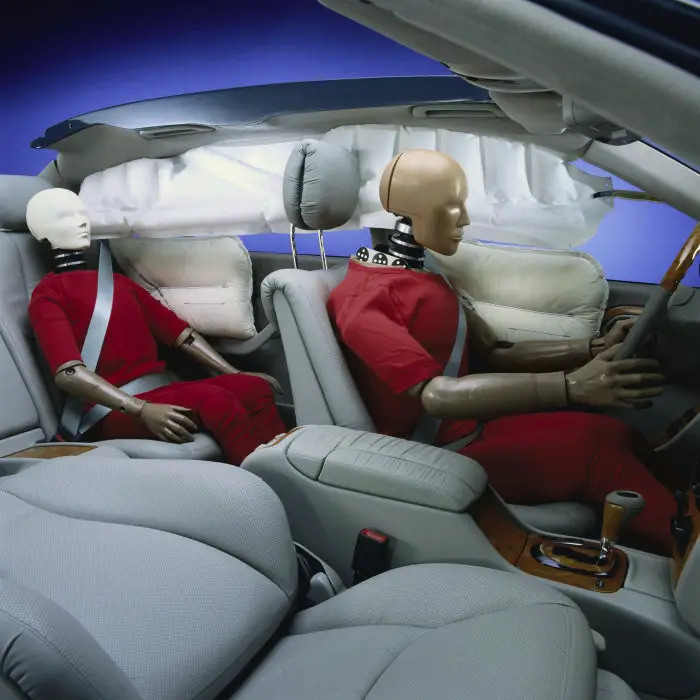Did you know that seatbelt and airbag failures contribute significantly to the severity of injuries in car accidents? In the event of a crash, these safety features are designed to protect occupants from harm, but when they malfunction, the consequences can be devastating. This article explores the critical roles of seatbelts and airbags, the dangers posed by their failures, common causes behind these malfunctions, legal options for recourse, and proactive measures to prevent such failures.
Seatbelts and airbags are not just safety devices; they are crucial lifelines in the event of a collision. Understanding how they function and the risks associated with their failures is essential for every driver and passenger committed to road safety.
How Seatbelts and Airbags Work
Seatbelts and airbags are meticulously engineered to act as the first line of defense in a car accident, according to the Accident attorneys in Nevada at PSR. Seatbelts secure occupants in place, distributing the force of impact across stronger parts of the body. Airbags, on the other hand, deploy rapidly upon impact, cushioning occupants from striking hard surfaces within the vehicle.
These safety features work in tandem to mitigate the severity of injuries during a collision. By restraining occupants and cushioning them from secondary impacts, seatbelts and airbags play a critical role in reducing the risk of life-threatening injuries. Understanding their design and function underscores their importance in vehicle safety protocols.
The Dangers of Seatbelt and Airbag Failures
Despite their critical roles, seatbelt and airbag failures can expose occupants to heightened risks during accidents. When these safety mechanisms malfunction, the consequences can be dire.
Failed seatbelts may fail to restrain occupants properly, increasing the likelihood of severe injuries or ejection from the vehicle. Malfunctioning airbags may fail to deploy or deploy improperly, resulting in inadequate protection from collision forces or causing secondary impact injuries.
Awareness of these potential failures is crucial for drivers and passengers alike, as it underscores the importance of regular inspection and maintenance of vehicle safety systems.
Common Causes of Seatbelt and Airbag Failures
Several factors can contribute to seatbelt and airbag failures, compromising their ability to protect occupants effectively:
Manufacturing defects in seatbelt materials or airbag components. Improper installation or maintenance of seatbelts and airbags. Vehicle age and wear and tear affect the functionality of safety systems. The severity of the accident may exceed the safety systems’ design limits.
Understanding these factors highlights the importance of proactive measures to ensure the reliability of seatbelts and airbags in critical moments.
Legal Recourse for Seatbelt and Airbag Failures
In cases where seatbelt or airbag failures lead to injuries, legal recourse through product liability laws may be pursued. Product liability holds manufacturers accountable for producing defective products that cause harm to consumers. This legal avenue allows victims of safety equipment failures to seek compensation for medical expenses, lost wages, and pain and suffering.
It’s crucial for individuals affected by such failures to consult with legal professionals specializing in product liability cases. These experts can assess the circumstances, gather evidence, and pursue claims against the responsible parties, ensuring accountability and justice for those impacted.
Enhance Safety on The Road
In conclusion, the proper functioning of seatbelts and airbags is crucial for mitigating the severity of injuries in car accidents. These safety features are designed to protect occupants from harm, but when they fail, the consequences can be devastating. By understanding how seatbelts and airbags work, recognizing the dangers of their failures, and taking proactive steps to prevent malfunctions, drivers and passengers can significantly enhance their safety on the road.
It’s essential to prioritize vehicle safety through regular maintenance, staying informed about recalls, and seeking legal guidance if safety equipment failures lead to injuries. By doing so, we not only protect ourselves but also advocate for safer driving practices and accountability in the automotive industry.
For more information on vehicle safety and legal assistance related to seatbelt and airbag failures, consider consulting with a qualified legal professional or visiting reputable sources dedicated to road safety advocacy. Together, we can strive towards safer roads and better protection for all motorists.

Comments are closed